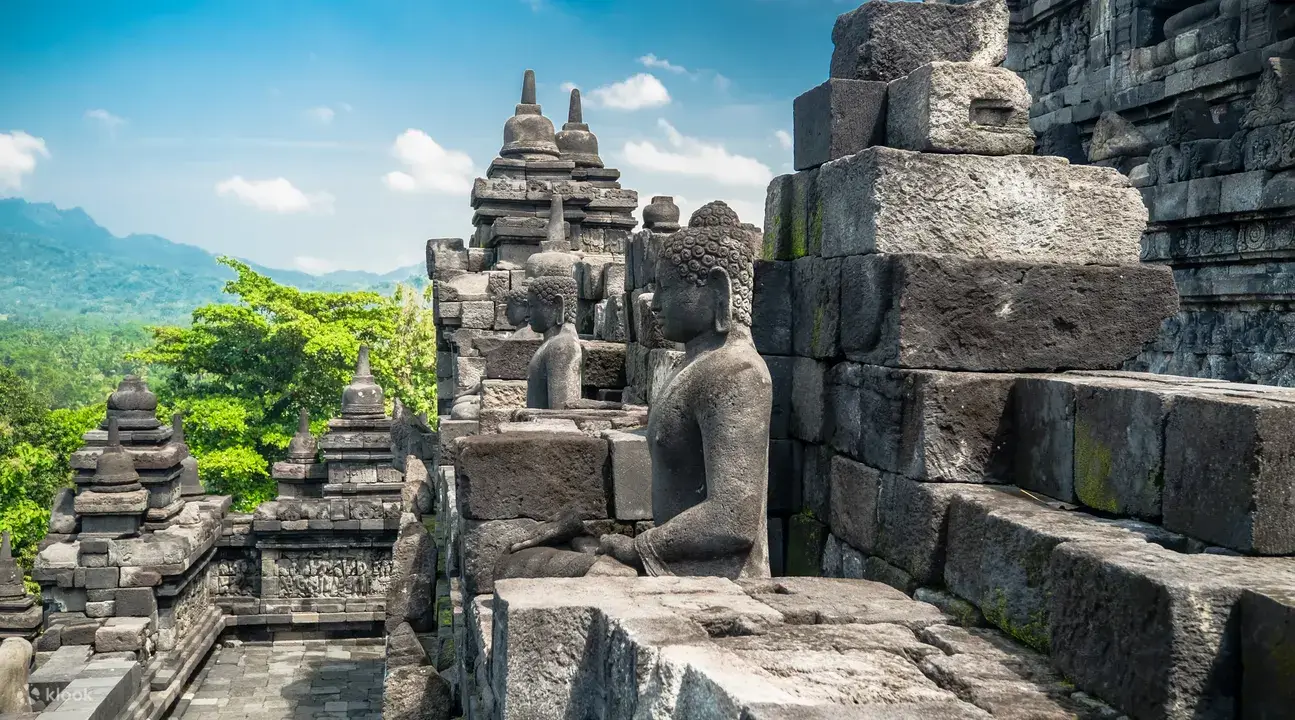Borobudur Temple (9th Centur)

Title: Borobudur Temple
Location: Magelang, Central Java, Indonesia
Year of Construction: Estimated to be built in the 9th century
Description: Borobudur Temple is a magnificent ancient Buddhist temple located in the lush landscapes of Magelang, Central Java, Indonesia. It is one of the most significant cultural and religious landmarks in Southeast Asia, attracting thousands of visitors and pilgrims each year.
Architectural Marvel: The temple is a marvel of ancient architecture and engineering, constructed without the use of any cement or adhesive. It is built on a hill and consists of nine stacked platforms, featuring a central stupa at the top. The structure is adorned with over 2,600 intricate relief panels and 504 Buddha statues, all of which are masterfully carved.
Spiritual Significance: Borobudur Temple holds deep spiritual significance as it represents the Buddhist cosmology. The temple's design symbolizes the path to enlightenment, with the lower levels representing the world of desires and suffering, and the upper levels symbolizing the realms of knowledge and liberation.
Three Circular Platforms: The temple's base comprises three circular platforms, each representing different stages of human life - Kamadhatu (the world of desire), Rupadhatu (the world of forms), and Arupadhatu (the world of formlessness). Pilgrims traditionally walk clockwise around these platforms as a symbolic act of spiritual journeying.
Detailed Relief Panels: The walls of Borobudur Temple are adorned with intricately carved relief panels that tell stories from Buddhist scriptures. These panels serve as a visual representation of Buddhist teachings and are a testament to the artistic and storytelling abilities of ancient Javanese craftsmen.
Sunrise and Sunset Views: The temple's location atop a hill offers breathtaking views of the surrounding landscape, especially during sunrise and sunset. Many visitors ascend the temple before dawn to witness the magical sight of the sun rising over the horizon, creating a mystical atmosphere.
Restoration and Preservation: Over the years, Borobudur Temple has undergone several restoration efforts to protect it from natural disasters and human impact. The Indonesian government, along with UNESCO, has played a crucial role in preserving this cultural heritage site for future generations.
World Heritage Site: In recognition of its cultural and historical significance, Borobudur Temple was designated as a UNESCO World Heritage Site in 1991, further enhancing its global significance and promoting tourism in the region.
Religious Ceremonies: Borobudur Temple remains an active place of worship for Buddhists, who gather here for special religious ceremonies and festivals, such as Vesak, to commemorate the birth, enlightenment, and death of Lord Buddha.
Tourist Attraction: The temple's grandeur and spiritual ambiance make it a popular tourist destination, drawing travelers from all over the world who come to marvel at its beauty and immerse themselves in its spiritual aura.
Conclusion: Borobudur Temple stands as an exceptional testament to ancient engineering, artistic skill, and spiritual devotion. As a place of profound significance for Buddhists and an architectural masterpiece for all, it continues to captivate the hearts and minds of visitors, offering a glimpse into Indonesia's rich cultural heritage and the wisdom of ancient civilizations.
